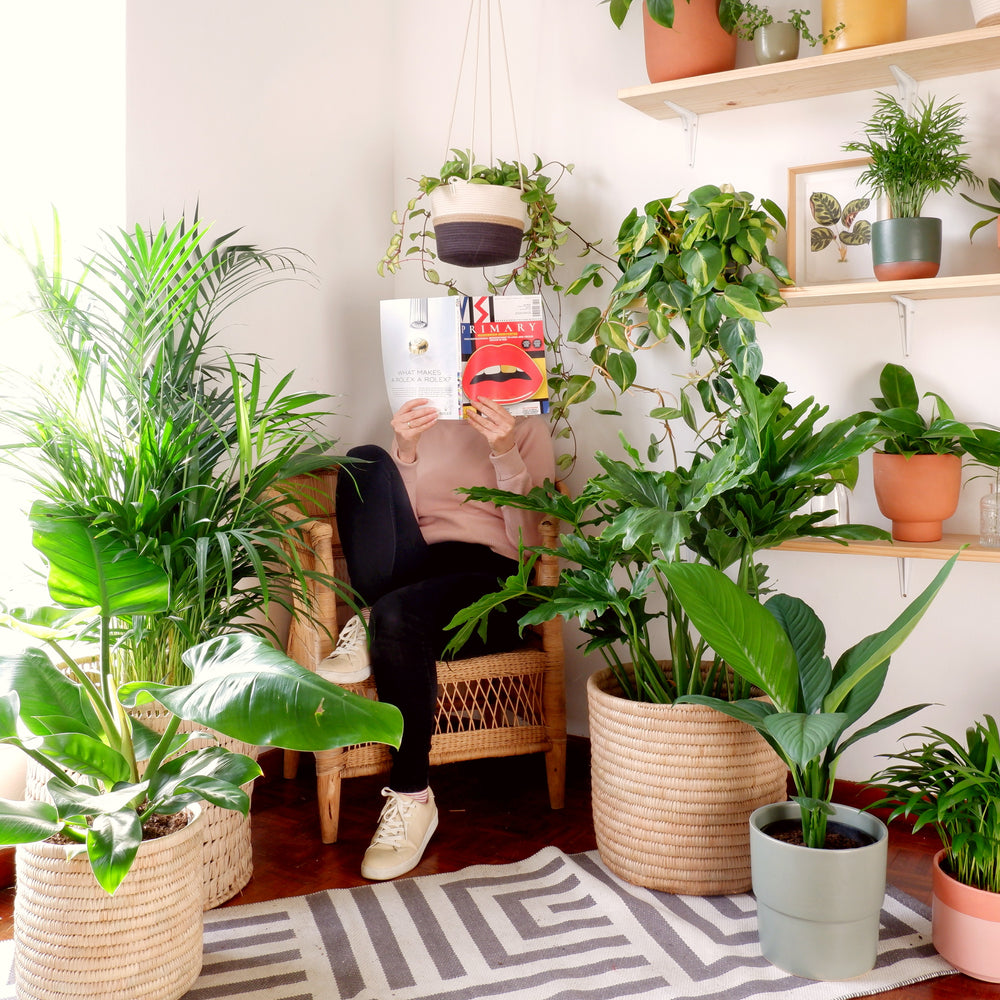Zebra Basket Vine Care Instructions
Zebra Basket Vine
Scientific name: Aeschynanthus Marmoratus - the updated name is Aeschynanthus longicaulis
Synonyms: Lipstick vine, Lipstick plant, Zebra basket plant
The Lipstick Vine is really popular for a reason, and looks fantastic in a hanging basket display or in a plant hanger in a number of places around your home. By increasing the brightness and humidity the growth will speed up, but otherwise it’s a steady plant to look after with minimal effort. Many houseplants are grown solely for their foliage, but this plant has beautiful blooms AND standout foliage - win-win!
Note: Please be aware that whilst the plant is non-toxic and pet friendly, it’s best to keep out of reach of children and pets (hanging it would be a great way of doing this!)
Common Symptoms
- Scorched yellowing foliage: Your Lipstick vine is getting too much direct light, move to a more shady spot. Be aware of plants hanging in windowsills in warmer months as the leaves can scorch.
- Very long ‘stretched’ stems/internodes: This is called etiolation and means that your houseplant isn’t getting the correct amount of light; stems will be especially ‘stretched’ and leaves smaller in size.
- New growth is small: If the leaves are continuously small, your houseplant might not be getting enough light/humidity. Move to a brighter spot.
- Shrivelled up foliage: The plant isn’t getting enough water or humidity (or both); gradually increase both.
- No flowers: The most common reason is that your plant isn’t getting enough light. Keeping your Aeschynanthus slightly root bound can also encourage blooming too!
- Pests: Incorrect care and lack of humidity are the main reasons pests may appear, aphids, red spider mite and mealy bugs are ones to be particularly aware of in warm, dry conditions. Keeping the humidity up is the main deterrent, and good circulation around the plant also helps but if pests are present, this plant can be treated with insecticidal soap or neem oil. Repeat weekly and keep the Aeschynanthus in isolation until completely pest-free.
- Plant collapse: This is often caused by root rot as a result of prolonged overwatering, especially in winter.
Care Instructions
- Origin: Native to Malaysia and Indonesia, you’ll find Aeschynanthus growing off trees in tropical and subtropical conditions.
- Height: up to 0.8 metre height / 0.6 metre spread indoors. Outdoors in its natural habitat it grows freely off trees as epiphytic plants.
- Light: Ideally, moderate indirect filtered light. Protect from harsh sun which can scorch the foliage and cause wilting.
- Water: Water when the top layer of potting mix has dried out. If placed in a brighter position, your Lipstick Vine will require more watering. Don’t let the compost dry out too much and be sure not to overwater in winter. Use water at room temperature so as not to shock the roots and don’t allow the plant to sit in water.
- Humidity: Moderate to high humidity will be beneficial and promote healthy growth and blooms.
- Temperature: Aeschynanthus will enjoy temperatures of 16-25°C, try to avoid sudden drops in temperature and be wary of draughts and open windows. If in a window, be aware of cooler nighttime temperatures.
- Soil: A free-draining organic potting mix with added perlite and orchid bark mixed in will be ideal for this plant, allowing breathability for the roots.
- Fertilizer: Your lipstick plant lies to be fertilized once a month during the growing season (Spring and Summer). Use a balanced fertiliser at half the recommended dilution level for this plant. If the potting medium is particularly dry, water lightly before feeding to avoid fertiliser burning the roots.
- Repotting: These houseplants have quite a small root structure in relation to their size, so don’t require regular repotting. They also grow best and are more likely to bloom in abundance when slightly root bound too. Roots ‘circling’ around the bottom of the nursery pot is an indication that repotting is needed. Increase pot size by just a few centimetres at this stage, no drastic jumps.
- Pruning: You can prune your houseplant when the stems get particularly long. You’ll want to use a sterile blade and trim the stem back by a few inches . This will encourage new growth too!
- Propagation: Aeschynanthus isn’t the easiest plant to propagate, though it’s not impossible and propagation can take a number of weeks. Take a bunch of stem cuttings and place in a small cache pot of the potting mix as detailed above. At this point, it is beneficial to keep the humidity high so cover your cuttings in a propagator / humidity dome…or plastic bag and place in a well-lit spot.
If in stock, shop for Zebra Basket Vine and other Lipstick Vines here.







